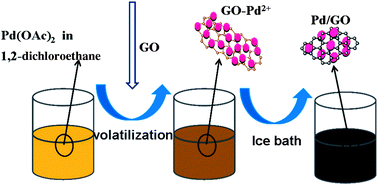In situ synthesis of highly loaded and ultrafine Pd nanoparticles-decorated graphene oxide for glucose biosensor application
Abstract
Highly loaded and ultrafine Pd

* Corresponding authors
a Institute of Petrochemical Technology, Changzhou University, Changzhou 213164, P. R. China
b
Jiangnan Graphene Research Institute, Changzhou 213000, P. R. China
E-mail:
yzkongyong@yahoo.com.cn
Highly loaded and ultrafine Pd

 Please wait while we load your content...
Something went wrong. Try again?
Please wait while we load your content...
Something went wrong. Try again?
Y. Qin, Y. Kong, Y. Xu, F. Chu, Y. Tao and S. Li, J. Mater. Chem., 2012, 22, 24821 DOI: 10.1039/C2JM35321K
To request permission to reproduce material from this article, please go to the Copyright Clearance Center request page.
If you are an author contributing to an RSC publication, you do not need to request permission provided correct acknowledgement is given.
If you are the author of this article, you do not need to request permission to reproduce figures and diagrams provided correct acknowledgement is given. If you want to reproduce the whole article in a third-party publication (excluding your thesis/dissertation for which permission is not required) please go to the Copyright Clearance Center request page.
Read more about how to correctly acknowledge RSC content.
 Fetching data from CrossRef.
Fetching data from CrossRef.
This may take some time to load.
Loading related content
